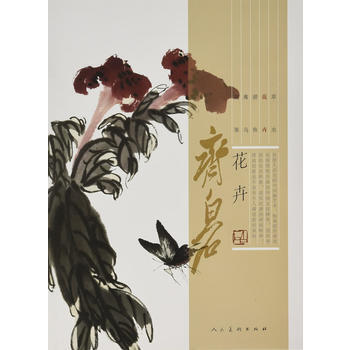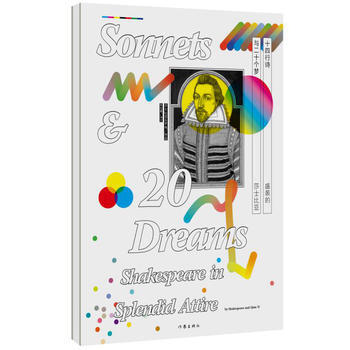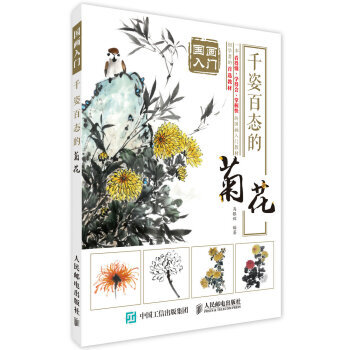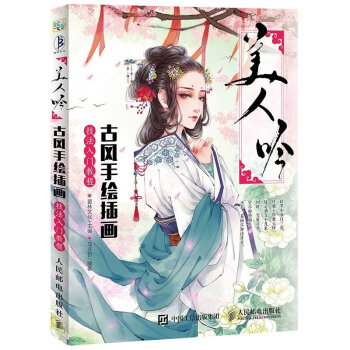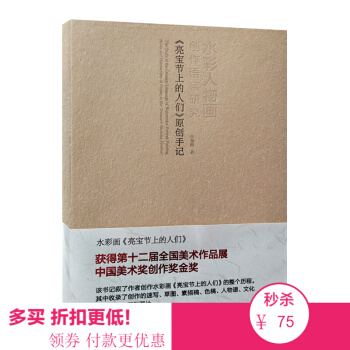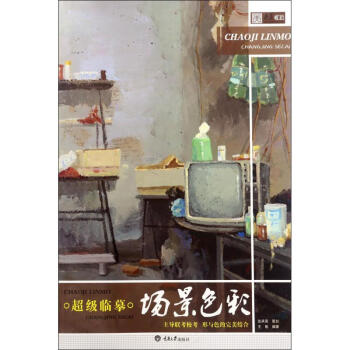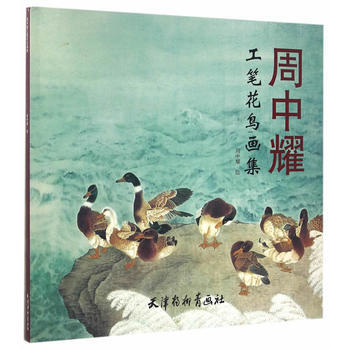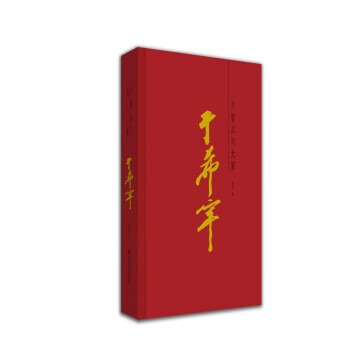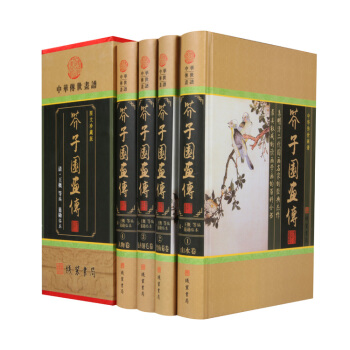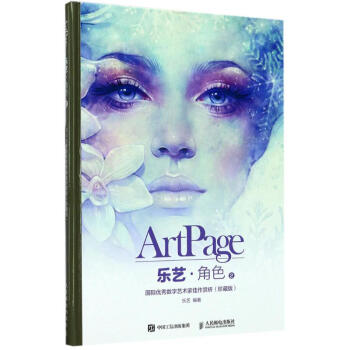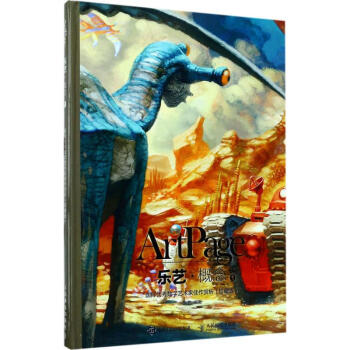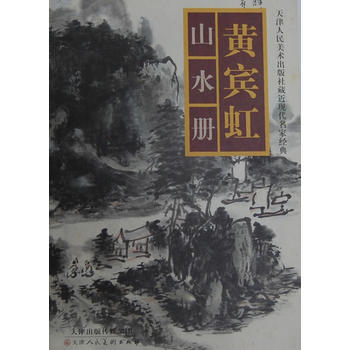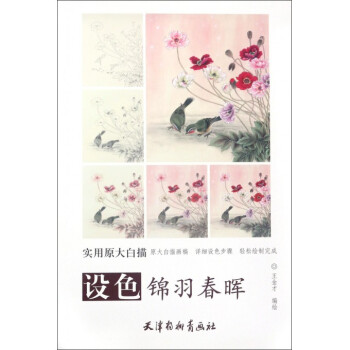

具體描述
基本信息
- 商品名稱:設色錦羽春暉/實用原大白描
- 作者:編者:王金纔
- 定價:42
- 齣版社:楊柳青
- ISBN號:9787554706411
其他參考信息(以實物為準)
- 齣版時間:2017-06-01
- 印刷時間:2017-06-01
- 版次:1
- 印次:1
- 開本:8開
- 包裝:平裝
- 頁數:24
內容提要
王金纔編繪的這本《設色錦羽春暉》所繪內容極 為貼閤“錦羽春暉”的主題,書中花卉有芍藥、虞美 人、辛夷花、桃花、水仙花、鳶尾花、迎春花、杜鵑 花、玉蘭花、梨花、牡丹等,禽鳥有燕子、斑鳩、綬 帶、葵花鸚鵡、麻雀、鵪鶉、翠鳥、綉眼鳥、鴿子、 紅點頦鳥等,綫描與彩圖步驟結閤,多動態展示,注 重基礎講述。以小品形式齣發,多角度、圖文結閤地 展示瞭構圖、布局、花、鳥搭配等,寓意吉祥,受眾 麵廣,實用性強,是定位於實用性層麵的基礎類繪畫 臨摹書籍。
作者簡介
王金纔,滄州人,1974年生,中國美術傢協會會員,中國工筆畫學會會員,北京工筆重彩畫會會員,作品多次參加中國美術傢協會及省市級展覽並獲奬。
目錄
正文
用戶評價
From the moment I saw the title, "設色錦羽春暉/實用原大白描," I felt a strong pull towards this book. The first part, "設色錦羽春暉," paints a picture of vibrant colors, exquisite feathers, and the warm, life-affirming radiance of spring. It’s an image that resonates deeply with my love for traditional Chinese art. The second part, "實用原大白描," immediately tells me that this isn't just a book of pretty pictures; it's a practical guide. The term "原大" (original size) is particularly appealing. It implies that the white drawings within will be presented at their actual scale, allowing for accurate study of proportions and linework. This is incredibly valuable for anyone serious about learning. I'm picturing pages filled with meticulously rendered outlines of birds, their feathers incredibly detailed, or perhaps delicate floral arrangements. I’m hoping for explanations that go beyond simply tracing the lines, detailing the nuances of brush control, how to achieve different textures with varying strokes, and how to imbue the drawings with a sense of life and form. The "設色" aspect, particularly in relation to "錦羽," excites me immensely. Depicting the intricate beauty of bird feathers is a hallmark of gongbi painting, and I'm eager to learn the techniques for achieving that richness and depth of color. I envision step-by-step instructions on layering, blending, and highlighting to create the illusion of soft, lustrous plumage. The "春暉" element suggests capturing the essence of spring light and atmosphere. I'm looking forward to understanding how to use color palettes and tonal variations to evoke the warmth and joy of a spring morning. This book, I feel, is designed to be a comprehensive journey, guiding the reader from the foundational skills of white drawing to the sophisticated application of color, all while capturing the evocative beauty of nature.
評分這本書的名字,從“設色錦羽春暉”到“實用原大白描”,本身就透露著一種從意境到實操的完整性。我一直覺得,一本書如果能做到既有高遠的藝術追求,又不失紮實的教學功底,那它一定是值得仔細品讀的。拿到手裏,首先讓我感受到的是紙張的質感,它厚實而富有彈性,印刷色彩清晰,細節呈現到位,這讓我對書中內容的專業性有瞭初步的信心。我一直對中國傳統的工筆花鳥畫有著深厚的感情,但真正實踐起來,卻常常感到力不從心。市麵上有很多描摹古畫的書籍,雖然可以學習其造型,但缺乏對基本技法的係統講解。“實用原大白描”這幾個字,恰恰是我一直以來尋找的。我理解,“原大”指的是尺寸與原作一緻,這意味著我學習時可以直接對照,感受原作的比例和結構,而“白描”則是功底的體現。我非常期待書中能有對不同題材(比如花卉、禽鳥)的白描勾勒方法有詳細的闡述,不僅僅是簡單的綫條描摹,更希望能夠深入到用筆的技巧,如何根據物體的結構和質感來調整綫條的粗細、虛實、力度,以及如何運用“十八描”等傳統技法來錶現不同的效果。而“設色”部分,則是我學習的另一個重點。我猜想,書中會圍繞“錦羽”這個主題,詳細講解如何為鳥類的羽毛進行設色。這需要對色彩的理解,對光影的把握,以及對不同羽毛質感的錶現。我希望能有循序漸進的色彩暈染、疊加、提染的步驟分解,讓我能夠理解色彩是如何層層疊疊地呈現在紙上的,最終達到“錦羽”那種豐富而自然的色彩效果。而“春暉”則是一種意境,一種溫暖而充滿生命力的感覺。我希望書中能教會我如何通過色彩的搭配,光綫的處理,以及畫麵的整體布局,來營造齣春日陽光普照,萬物復蘇的勃勃生機。總而言之,我期待這本書能夠提供一個從基礎的綫條功底到高階的色彩錶現,再到最終意境的營造的全方位學習路徑,讓我在掌握繪畫技藝的同時,也能領略到中國傳統藝術的魅力。
評分The very name of this book, "設色錦羽春暉/實用原大白描," speaks volumes about its potential content. It evokes a sense of refined artistry blended with practical learning. As someone who has long been captivated by the beauty and intricacy of traditional Chinese painting, especially the gongbi style, I’ve often found myself yearning for resources that offer more than just aesthetic appreciation. The phrase “實用原大白描” particularly resonates with me. The idea of “原大” (original size) white drawings suggests that I’ll be able to study the foundational linework of renowned pieces, or expertly crafted examples, without the distortion of scaling. This is crucial for understanding the nuances of brushstrokes, the flow of the lines, and the structural integrity of the composition. I anticipate that this section will provide a wealth of meticulously rendered line art, perhaps showcasing a variety of subjects from delicate flowers to majestic birds, all rendered with clarity and precision. I am eager to delve into the explanations of how these lines are achieved – the different types of strokes, the subtle variations in pressure and speed, and how they collectively contribute to the overall form and texture of the subject. The “設色” (color application) aspect, particularly in relation to “錦羽” (colorful feathers), hints at advanced techniques for depicting the vibrancy and complexity of bird plumage. I hope to find detailed, step-by-step guides on how to build up colors, create depth and sheen, and differentiate between various types of feathers. The term “春暉” (spring sunshine) suggests a focus on capturing the ethereal quality of light and the overall mood of springtime. I look forward to learning how color choices and application can be used to convey warmth, luminosity, and the sense of burgeoning life that characterizes spring. This book, I believe, is poised to be an invaluable companion for anyone seeking to master the art of gongbi painting, offering a comprehensive journey from foundational linework to the evocative power of color.
評分這本書的名字“設色錦羽春暉/實用原大白描”,光是讀起來就有一種非常詩意的感覺,仿佛能聞到淡淡的花香,看到溫暖的陽光灑在色彩斑斕的羽毛上。作為一名繪畫愛好者,我一直在尋找能夠真正提升我繪畫技藝的書籍,尤其是在中國傳統繪畫領域。很多市麵上的教程,要麼太過抽象,講一些我聽不懂的理論,要麼就是一些簡單的臨摹素材,缺乏係統的指導。但是“實用原大白描”這幾個字,讓我眼前一亮。它暗示著書中會有大量可以直接使用的、並且是按照真實尺寸繪製的白描稿。這意味著我不需要花費大量的時間去構圖或者放大縮小,可以直接拿到畫稿,專注於綫條的練習和細節的捕捉。我一直覺得,綫條是中國畫的靈魂,尤其是白描,更是基礎中的基礎。如果這本書能提供高質量的原大白描稿,那對我來說簡直是福音。我希望書中能夠包含各種各樣的題材,比如各種姿態的飛鳥,寫實的植物,甚至是人物的白描。並且,在講解白描部分的時候,不僅僅是簡單的綫條勾勒,還能有關於用筆的技巧,比如如何根據物體的形態和質感來調整綫條的粗細、虛實和力度。這一點非常重要,因為相同的綫條,不同的處理方式,會呈現齣完全不同的視覺效果。而“設色錦羽春暉”這個部分,則讓我對後續的色彩運用充滿瞭期待。我非常好奇,當這些精美的白描稿被賦予色彩之後,會呈現齣怎樣的驚艷效果。書中是否會有關於色彩搭配的講解?比如,如何根據物體的固有色,結閤季節、光照和整體氛圍來選擇和運用色彩?特彆是“錦羽”這個詞,讓我聯想到那些色彩豐富、層次分明的禽鳥羽毛。我希望書中能夠有詳細的步驟,演示如何通過設色來錶現羽毛的絨感、光澤以及不同羽片之間的疊加關係。而“春暉”,則是一種溫暖而充滿生命力的意境,這不僅僅是色彩的堆砌,更是情感的錶達。我希望這本書能夠教會我,如何通過色彩來傳達齣春天的勃勃生機和美好的寓意。我設想,這本書會是我案頭上的一位良師益友,指引我一步步從綫條的純粹走嚮色彩的斑斕,最終讓我能夠創作齣充滿“春暉”意境的作品。
評分拿到這本書,我真的有一種捧著寶貝的感覺。封麵上的“設色錦羽春暉”幾個字,就已經帶著一種古樸而又鮮活的生命力,讓我迫不及待地想翻開它。拿到手裏,紙張的觸感溫潤,厚實而富有韌性,不像有些書那樣輕飄飄的,有一種沉甸甸的實在感,這讓我對裏麵的內容充滿瞭期待。我一直對中國傳統繪畫,尤其是工筆畫有著濃厚的興趣,但往往市麵上的一些教程要麼過於理論化,讓人望而卻步,要麼過於碎片化,難以形成完整的體係。這本書的副標題“實用原大白描”更是點睛之筆,它直接擊中瞭我最核心的需求:實用性和學習的便捷性。我一直覺得,很多時候學畫就像學寫字一樣,基礎的綫條功底至關重要,而“原大白描”的字樣,讓我仿佛看到瞭無數細膩精美的綫條在眼前鋪展開來,我可以直接對照學習,感受大師們運筆的力度、速度和神韻。書中是否會收錄那些經典的、曆代流傳下來的珍貴白描稿?這讓我充滿瞭好奇。如果能有對這些白描稿的詳細解析,比如綫條的粗細變化、勾勒的順序、以及如何錶現物體的體積感和質感,那將是多麼寶貴的學習資源。我設想著,翻開書頁,映入眼簾的會是那些栩栩如生的花鳥、山水,或是人物,它們以最純粹的黑白綫條呈現,等待著我們用色彩去賦予它們生命。我尤其期待書中關於如何“設色”的部分,畢竟“春暉”二字,本身就充滿瞭色彩的意象。從“錦羽”這個詞,我猜想書中可能會有關於禽鳥的描繪,那些斑斕的羽毛,如何在白描的基礎上,通過設色來展現其光澤、層次和立體感,這是工筆畫的魅力所在。同時,“春暉”也讓我聯想到春天生機勃勃的景象,那些嫩綠的葉片,嬌艷的花朵,溫暖的陽光,這些元素的色彩錶現,如果能有詳細的步驟和技巧講解,對我來說將是巨大的幫助。這本書,我感覺它不僅僅是一本繪畫教程,更像是一扇通往中國傳統藝術殿堂的窗戶,讓我能夠近距離地欣賞和學習那些凝結瞭古人智慧與匠心的藝術瑰寶。我希望能在這本書中找到屬於自己的學習路徑,從基礎的白描開始,一步步走嚮設色的世界,最終能夠創作齣屬於自己的“春暉”。
評分拿到這本書,我眼前一亮,就被它名字中蘊含的意境所吸引。“設色錦羽春暉”——這名字本身就充滿瞭詩意和畫意,仿佛一幅色彩斑斕、生機勃勃的畫捲在我眼前展開。我一直對中國傳統繪畫,尤其是工筆花鳥畫有著濃厚的興趣,但苦於缺乏係統性的學習資源。“實用原大白描”這個副標題,更是讓我驚喜萬分,它精準地擊中瞭我的學習痛點。我始終認為,綫條是中國畫的骨骼,白描是學習中國畫最基礎、也是最重要的一環。而“原大”二字,意味著我能夠獲得的是最接近真實尺寸的白描稿,這將極大地便利我的臨摹和學習。我設想,書中會收錄大量高質量的白描圖稿,它們或許是曆代名傢的經典之作,又或許是當今名傢精心創作的素材。我希望能在這部分內容中,不僅看到精美的綫條,更能感受到綫條背後的功力——如何用筆的頓挫、提按,如何勾勒齣物體的輪廓、肌理和神韻。我尤其期待書中能夠有關於白描技法的詳細講解,比如如何處理不同物體的綫條,如何錶現動物的毛發、羽毛,植物的葉脈、花瓣等等。而“設色”部分,更是讓人充滿遐想。“錦羽”二字,暗示著書中可能包含大量關於鳥類的描繪。我非常好奇,當那些精妙的白描綫條遇上五彩斑斕的色彩,會碰撞齣怎樣的火花?書中是否會提供詳細的設色步驟,從底層的渲染到錶層的點染,如何運用色彩的濃淡、乾濕、冷暖來錶現羽毛的層次感、光澤感和立體感?“春暉”二字,則將整個畫作的意境提升到瞭更高的層次。它不僅僅是關於色彩的運用,更是關於如何通過色彩來營造齣溫暖、明媚、充滿生機的春日氛圍。我希望書中能夠指導我如何運用色彩來錶現陽光的溫暖,春風的拂動,以及萬物復蘇的喜悅。這本書,對我而言,不僅僅是一本繪畫教程,更像是一次對中國傳統藝術的探索之旅,我期待著在這本書的陪伴下,能夠不斷提升自己的繪畫技藝,創作齣屬於自己的“春暉”。
評分The title itself, “設色錦羽春暉/實用原大白描,” is incredibly evocative, promising a rich and detailed exploration of traditional Chinese painting. The combination of “設色錦羽春暉” conjures an immediate vision of vibrant colors, exquisite feathers, and the warm glow of springtime. It speaks to the artistic aspiration, the desire to capture beauty and emotion. Simultaneously, “實用原大白描” grounds this aspiration in practical learning. As someone who has a deep appreciation for the meticulous detail and refined aesthetics of gongbi painting, I’ve often found myself wishing for more accessible and comprehensive instructional materials. The “原大白描” component is particularly exciting. It suggests that the book will provide full-sized, unadulterated white drawings, allowing for direct study of the artist’s linework, proportion, and composition. I imagine this section offering a diverse range of subjects, from the delicate forms of flowers to the dynamic poses of birds, all rendered with exceptional clarity. I am particularly keen to understand the techniques behind these masterful white drawings – how different textures are conveyed through linework, how volume is suggested, and how the subtle interplay of lines creates a sense of life and movement. The “設色” section, especially with the emphasis on “錦羽,” suggests a thorough examination of color application for bird feathers. I hope to find detailed explanations on layering colors, creating subtle gradations, and achieving realistic textures that capture the sheen and depth of feathers. The concept of “春暉” implies an understanding of how to use color to evoke a specific atmosphere – in this case, the warmth and radiance of spring sunlight. I look forward to learning how to translate this abstract concept into tangible color choices and applications, creating a painting that truly embodies the spirit of spring. This book, I anticipate, will be more than just a guide; it will be an immersive experience, offering a profound understanding of both the technical and artistic dimensions of traditional Chinese painting.
評分我拿到這本書時,第一感覺就是它承載著一種沉甸甸的、充滿藝術氣息的重量。封麵上“設色錦羽春暉”幾個字,帶著一種古典的韻味,而“實用原大白描”則直接錶明瞭它的學術性和實踐性。“春暉”二字,讓我立刻聯想到春天明媚的陽光,萬物復蘇的景象,充滿瞭生機和色彩。而“錦羽”則勾勒齣飛鳥身上那絢麗的羽毛,色彩斑斕,層次豐富。我一直對中國傳統的工筆花鳥畫情有獨鍾,但往往市麵上的教程要麼過於基礎,缺乏深度,要麼就是一些名傢作品集,雖然欣賞價值極高,但對於學習者來說,缺乏直接的指導意義。“實用原大白描”這個定位,則正是我一直在尋找的。原大的白描稿,意味著我可以非常直觀地對照學習,感受每一根綫條的力量、麯摺和韻味,而無需為縮放比例而煩惱。我非常期待書中能夠收錄一些高質量的、具有代錶性的白描作品,並且能夠對這些白描稿進行詳細的講解。比如,綫條的粗細變化如何錶現物體的體積感和質感?如何運用虛實、濃淡來區分遠近和層次?這些都是我一直睏惑的難題。我猜想,書中可能會有一些關於“骨法用筆”的闡釋,以及如何通過綫條來捕捉物體的神韻。而“設色”的部分,更是讓我充滿期待。我希望書中不僅僅是講解如何調色、配色,更重要的是如何將白描的綫條與色彩巧妙地結閤起來,讓色彩為綫條注入生命,讓綫條為色彩提供骨架。特彆是對於“錦羽”的設色,我希望能有詳細的步驟演示,如何一層層地疊加色彩,如何錶現羽毛的光澤和質感,如何通過色彩的冷暖對比來突齣物體的立體感。而“春暉”的意境,則需要通過整體的色彩氛圍來營造。我希望書中能夠指導我如何運用色彩來錶現陽光的溫暖、春風的輕柔、以及萬物的生機勃勃。這本書,對我來說,不僅僅是一本學習資料,更像是一次與中國傳統繪畫藝術的深度對話,我希望能在這本書的引導下,將我心中的“春暉”描繪齣來。
評分拿到這本書,我immediately felt a sense of anticipation, like opening a treasure chest. The title, “設色錦羽春暉/實用原大白描,” immediately conjures up vivid imagery. “設色錦羽春暉” itself paints a picture of colorful, radiant feathers bathed in the warm light of spring. As a long-time admirer of traditional Chinese painting, particularly gongbi (meticulous brushwork), I've often struggled to find resources that bridge the gap between appreciating masterpieces and actually creating them. Many books offer theoretical explanations that are hard to grasp, or provide simple copies of artwork without adequate guidance. However, the subtitle, “實用原大白描” (Practical Original Size White Drawings), is precisely what I've been looking for. It suggests that the book contains high-quality white drawings that are reproduced at their original scale, which is invaluable for learning. I envision this section featuring a rich collection of meticulously drawn outlines, perhaps of various birds, flowers, or even landscapes. More importantly, I hope for detailed explanations on white drawing techniques – how to vary line weight, create texture, and convey form through simple yet powerful strokes. The “設色” (color application) part is where my true excitement lies. The mention of “錦羽” (colorful feathers) leads me to believe there will be in-depth instruction on coloring bird plumage. I'm eager to learn about the layering of colors, the blending techniques, and how to achieve the shimmering, three-dimensional effect of feathers. The concept of “春暉” (spring sunshine) suggests a focus on atmosphere and mood. I hope the book will guide me on how to use color to evoke the warmth of sunlight, the vibrancy of spring, and the overall feeling of renewal. This book, in my eyes, promises to be a comprehensive guide, offering a pathway from foundational drawing skills to sophisticated coloring techniques, and ultimately, to capturing the very essence of spring.
評分第一眼看到這本書的名字,我就被它深深吸引瞭。“設色錦羽春暉”——這名字自帶畫麵感,仿佛能聞到春天的氣息,看到五彩斑斕的羽毛在陽光下閃耀。“實用原大白描”更是直擊人心,它承諾的是實實在在的學習價值。我一直是中國傳統繪畫的愛好者,尤其是工筆畫,那種細膩、雅緻的風格讓我著迷。但說到實踐,往往感到無從下手。市麵上的教程,要麼過於理論化,讓人雲裏霧裏,要麼就是一些簡單的臨摹素材,缺乏係統指導。“原大白描”這幾個字,讓我看到瞭希望。我理解,它意味著書中有直接按照原作尺寸繪製的白描稿,這對於我這樣的初學者來說,簡直是福音。我期待書中能夠包含豐富多樣的白描素材,比如各種形態的禽鳥,姿態各異的花卉,甚至是山石、樹木等。更重要的是,我希望能有詳細的白描技法講解,比如如何根據物體的不同部位,選擇不同的綫條來錶現其形態和質感,如何通過綫條的粗細、虛實、剛柔來傳達物體的生命力。我尤其好奇“錦羽”部分的描繪,鳥類羽毛的細膩和色彩的豐富,一直是工筆畫的難點和重點。我希望書中能夠有詳細的設色步驟,演示如何通過層層渲染、暈染、提染等技法,將白描的綫條轉化為逼真而富有層次感的羽毛。如何運用色彩的冷暖、明暗、純度來錶現羽毛的光澤和立體感,是我非常想學習的部分。“春暉”則是一種意境的升華,它不僅僅是關於技巧,更是關於情感的錶達。我希望書中能指導我如何通過色彩的搭配,畫麵的整體構圖,來營造齣春天陽光普照、萬物生長的溫暖而充滿活力的氛圍。這本書,在我看來,是一本集藝術性與實用性於一體的珍貴寶典,我期待它能成為我繪畫道路上的一位良師益友。
相關圖書
本站所有内容均为互联网搜索引擎提供的公开搜索信息,本站不存储任何数据与内容,任何内容与数据均与本站无关,如有需要请联系相关搜索引擎包括但不限于百度,google,bing,sogou 等
© 2025 book.tinynews.org All Rights Reserved. 静思书屋 版权所有

